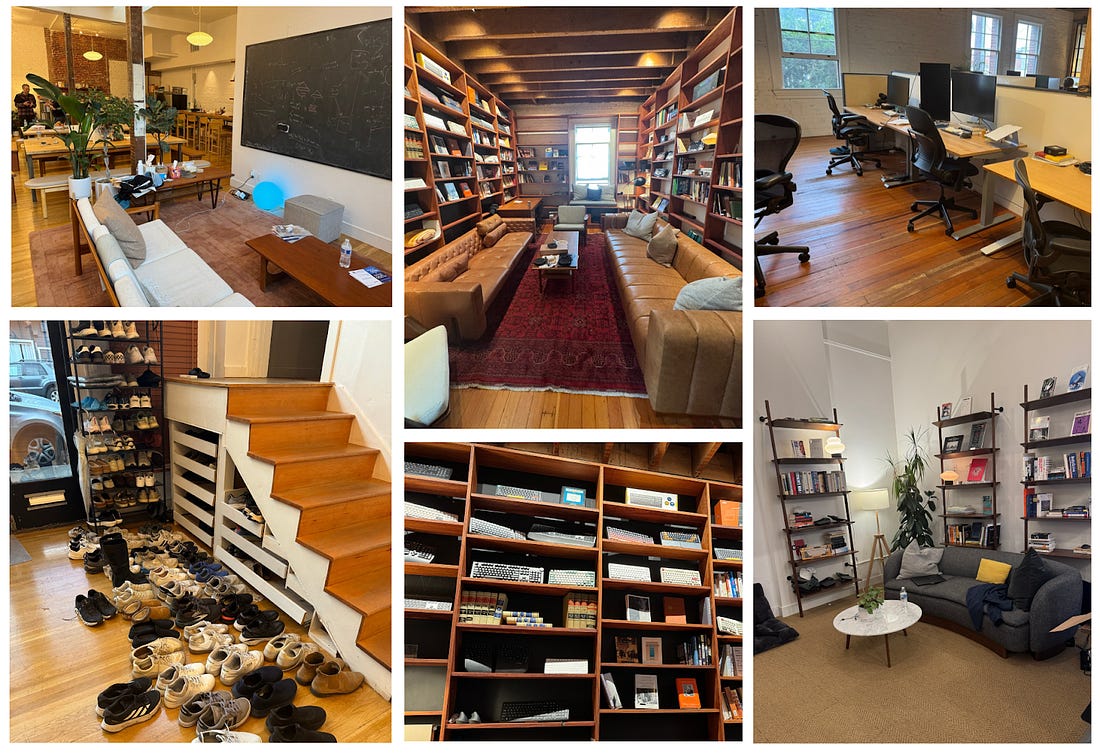|
 |
👋 Hi, this is Gergely with a subscriber-only issue of the Pragmatic Engineer Newsletter. In every issue, I cover challenges at Big Tech and startups through the lens of engineering managers and senior engineers. If you’ve been forwarded this email, you can subscribe here.
San Francisco is back as the world’s leading tech hub
Impressions from a week in San Fran spent visiting engineering teams at Cursor, OpenAI, Anthropic, Wispr, Factory, and more
Starting in 2020, the pandemic emptied offices and changed the ways tech companies operate, and how us techies work and collaborate, by making remote and hybrid work patterns the norm. San Francisco (SF) on the US West Coast became emblematic of a major shift: we saw an exodus of tech companies from the city as Pinterest, Stripe, PayPal, and others downsized, Tesla and Oracle moved to Texas, and many VCs, founders, and startups quit for other locations, or simply went fully remote.
But today, things are changing again. I’ve just returned from San Francisco, where I visited the headquarters of several leading AI companies and up-and-coming startups. Based on my conversations and observations, SF is most definitely back – and it’s more important than ever.
A new wave of AI startups has been the catalyst to make SF into a buzzing tech hub once more: there are ever more startups launching in the city, the AI meetup scene is energetic, and it’s easy for people to collaborate with one another in person. The tech hub model is proving its value all over again in SF, and might even be one reason for the incredible growth and adoption of AI products and services. Of course, Silicon Valley has no shortage of innovation, VC funding – and a substantial Big Tech presence – but SF stands out for the number of high-growth startups headquartered there.
The city looks like a trailblazer for the re-emergence of the tech hub model, reverting back from the remote work surge of 2020-2023. For companies and professionals, this seems relevant – wherever they’re based.
Today, we cover:
Cursor: push for release 2.0. A cozy office and a focus on shipping.
AI dev tools startups ahead of the curve. Wispr Flow wants devs to code more by talking, Continue is the “CI/CD infra for AI agents”, and Factory builds AI agents for engineering teams.
OpenAI. Scaling faster than any company ever. 10x infra growth for two years straight, with no signs of that slowing down. Refreshingly, OpenAI also hires junior engineers as well as seniors.
Anthropic. Self-organization at scale. Cofounder and former CTO Sam McCandlish shared what helps the company grow, and we discussed their tech stack and engineering challenges.
Buzzing meetups. The local chapter of AI Tinkerers was brimming with “builder energy”, and more than the usual amount of insider knowledge about models, maybe because OpenAI and Anthropic are headquartered next door.
Location, location, location. San Francisco-based AI startups seem like they’re getting more traction, faster. Location may play a role as it’s easy to network, sell to other startups, and hire engineers working on cutting-edge technologies.
AI wave, bubble, or both? It’s hard to be certain, but it feels like there hasn’t been this rate of explosive growth since the pre-millennium Dotcom Boom.
As always, I have no affiliation with the companies mentioned in this article, and am not paid to write about them. More in my ethics statement.
The bottom of this article could be cut off in some email clients. Read the full article uninterrupted, online.
1. Cursor: push for release 2.0
People swap their shoes for slippers when they arrive at Cursor’s headquarters at North Beach, SF, and there was a chill atmosphere during my visit there. That might suggest cosiness, but everyone was focused on the work, with a lot of in-person pairing taking place during what was the final stage of readying Cursor 2.0 for launch. It’s going to be their biggest release since the 1.0 launch in June.
An interesting workflow: automatic ticket resolution. Every incoming Linear ticket is automatically assigned to a Cursor agent, which one-shots a suggested fix, and a developer can then decide whether to merge it. This setting is on by default, and devs whom I asked find it very useful.
As is common for a dev tools company, the 80 or so developers at Cursor are users of their own product. This makes for an interesting dynamic: software engineer Eric Zakariasson told me that in the last 30 days, engineers there used unique 500K agent sessions and over 110K tabs. Many are now using multiple agents in parallel in their workflows.
Earlier, we covered more on Cursor in the deepdive Real-world engineering challenges: building Cursor.
2. AI devtools startups ahead of the curve
While in the city, I also stopped at the HQ of new startups founded in the last two years which are building platforms that are already seeing strong adoption by software engineers.
Wispr Flow: a new modality for programming?
One very interesting startup I stopped by at was Wispr Flow, which creates software to control a computer with the human voice – including writing code with dictation – by using LLM agents. Founded in 2024, the startup found its product-market fit this January, cofounder and CEO Tanay Kothari told me, when the product experienced 90% month-on-month growth which was purely organic without any advertising spend. At the time, the startup saw an impressive 20% free-to-paid conversion
